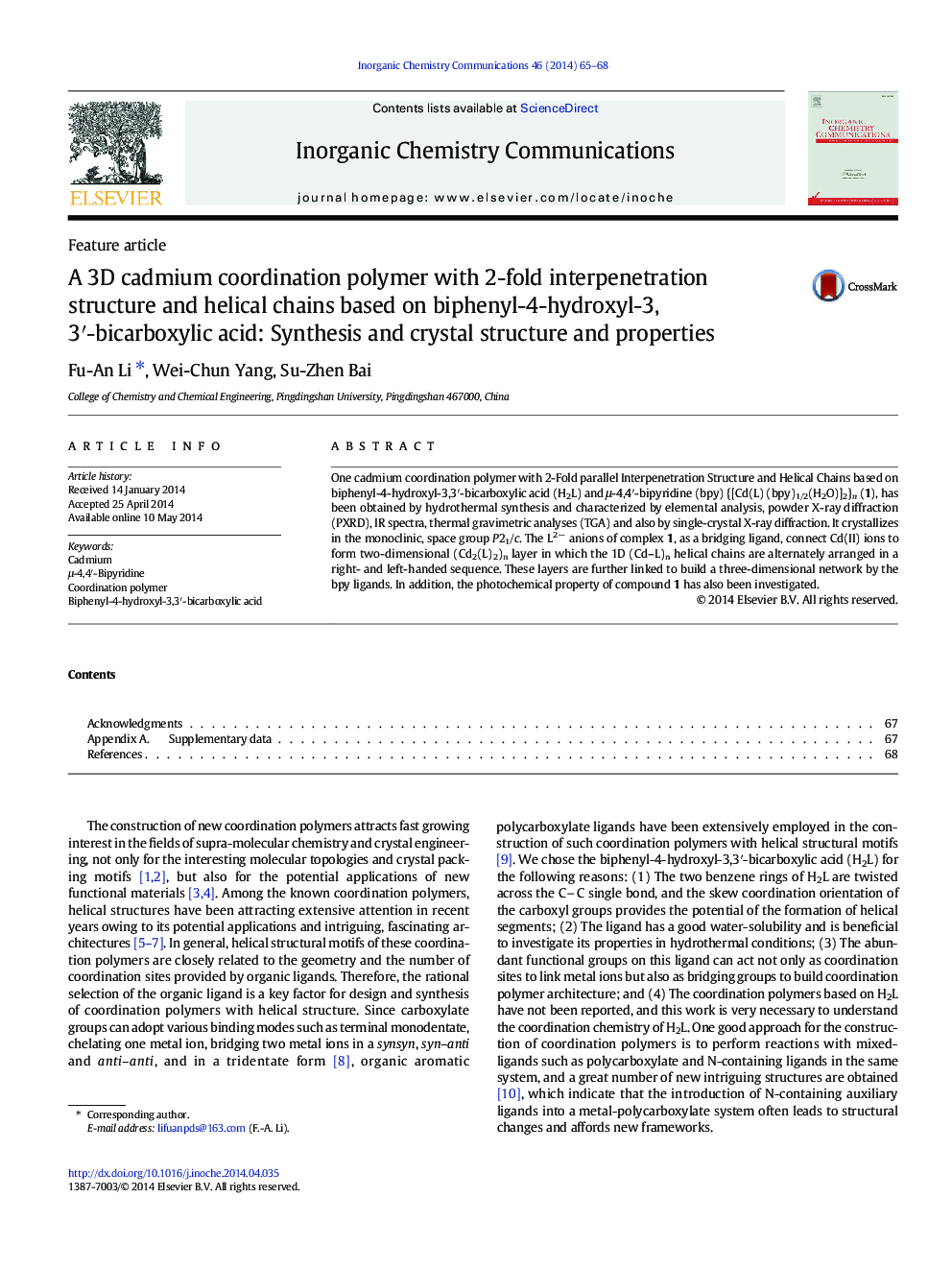| Article ID | Journal | Published Year | Pages | File Type |
|---|---|---|---|---|
| 1303544 | Inorganic Chemistry Communications | 2014 | 4 Pages |
•A 3D coordination polymer with 2-fold interpenetration structure•The R- and L-handed helical chains arranged alternately to form 2D layer•The luminescent properties of d10 metal–organic polymers
One cadmium coordination polymer with 2-Fold parallel Interpenetration Structure and Helical Chains based on biphenyl-4-hydroxyl-3,3′-bicarboxylic acid (H2L) and μ-4,4′-bipyridine (bpy) {[Cd(L) (bpy)1/2(H2O)]2}n (1), has been obtained by hydrothermal synthesis and characterized by elemental analysis, powder X-ray diffraction (PXRD), IR spectra, thermal gravimetric analyses (TGA) and also by single-crystal X-ray diffraction. It crystallizes in the monoclinic, space group P21/c. The L2 − anions of complex 1, as a bridging ligand, connect Cd(II) ions to form two-dimensional (Cd2(L)2)n layer in which the 1D (Cd–L)n helical chains are alternately arranged in a right- and left-handed sequence. These layers are further linked to build a three-dimensional network by the bpy ligands. In addition, the photochemical property of compound 1 has also been investigated.
Graphical abstractAn unusual compound {[Cd(L)(bpy)1/2(H2O)]2}n (1) comprising two equivalent interwoven nets of dmc topology has been obtained by hydrothermal reactions, in which the right- and left-handed (Cd–L)n helical chains are alternately arranged to give rise to 2D bichiral helical structure.Figure optionsDownload full-size imageDownload as PowerPoint slide
